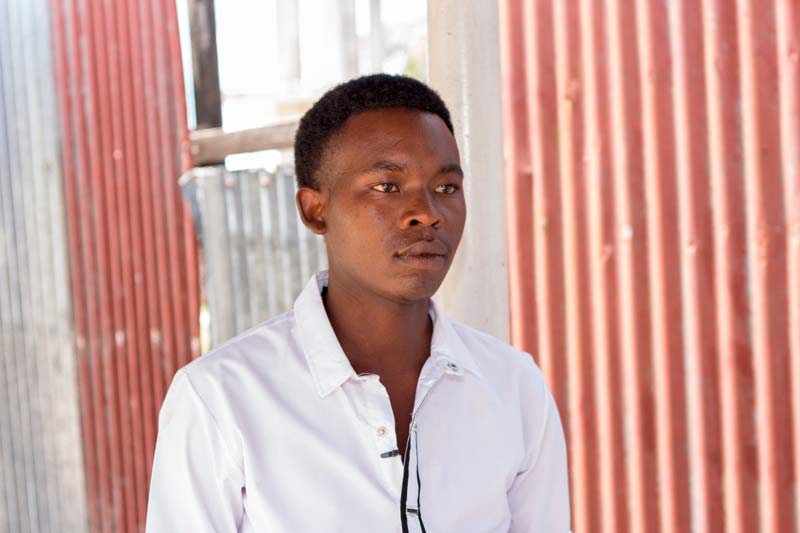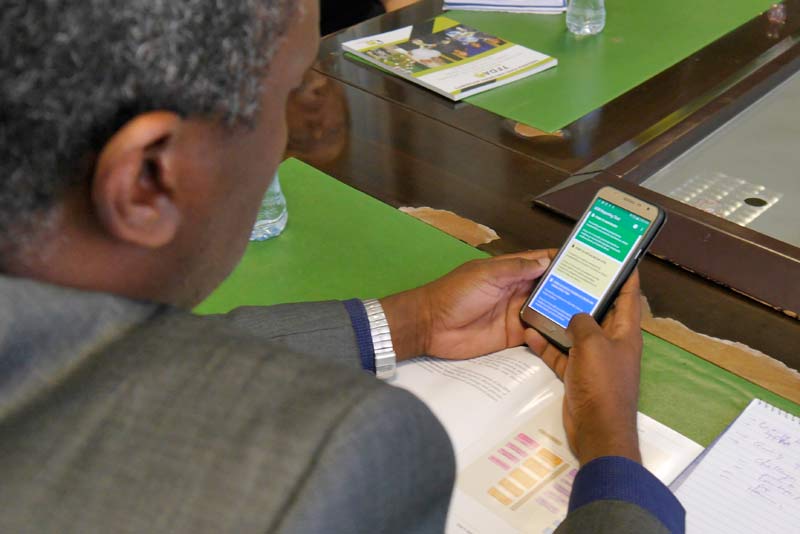In recent years Tanzania has made considerable progress in access to quality essential medicines and health products. Largely thanks to improved communication between small or remote health facilities and the central medical store, more medical supplies are reaching rural areas; and enhanced regulatory capacity is ensuring better quality, safety and effectiveness of treatments and of medical devices and diagnostics
However, as in many sub-Saharan African countries, funds and efforts are largely concentrated on major, heavily donor-funded infectious diseases, or maternal and child health programmes, leaving gaps in treatment and diagnosis for non-communicable diseases, which are rapidly spreading.
“We are experiencing a double epidemic,” says Dr Muhammad Bakari Kambi, the country’s recently appointed Chief Medical Officer. “We have communicable diseases … and an upsurge of NCDs (non-communicable diseases) – cancers, diabetes, cardiovascular disorders. Unfortunately drugs and medical equipment needed to manage these conditions are very expensive and that’s a huge challenge.”
Diabetes, hypertension and cancer are on the rise in the country. The government has included some medicines to treat these diseases in the national essential medicines list, but availability as well as prices remain a challenge.
Marco Salingo, Head of the Pharmacy Department at Mwananyamala District General Hospital, in Dar es Salaam, complains that medicines frequently run out at the hospital, especially medicines for chronic diseases like diabetes and cardiovascular conditions. “We place our orders to the central medical store every three months,” he explains, “but sometimes we run out of crucial medicines before the next order is placed, and there are also delays in orders being filled.”
Edward Terry, Acting Director of Customer Services and Zone Operations at the Medical Store Department, the body in charge of procuring medicines to public health facilities across the country, states that funds are a major problem. “The money we are allotted is insufficient to service the entire country. Particularly for medicines like insulin and anti-hypertensives, the price is too high so we cannot buy as much as we would need.” He also claims that forecasting needs by hospitals and smaller health facilities is sub-optimal.

Dr Delila Moshi, the Medical Officer in Charge at Mwananyamala Hospital, echoes the concern about the funds made available by the government to buy medical commodities but also claims that there are problems with the supply chain. “The distribution of medicines is slow and inefficient. When there’s a stock-out of certain medicines we’re forced to go to private suppliers, where the price is almost double.”
Dr Mavura Nurdin, head of the Diabetes clinic, says that diabetes is becoming an enormous problem in Tanzania, partly due to diet and lifestyle changes, but also because, with greater awareness, people are being checked for the disease more frequently than in the past. “We have 7 000 patients at Mwananyamala Hospital alone. We don’t always have enough medicines for all of them, so when we run out, we tell the patients they need to go and buy their insulin in a pharmacy, and pay the full price.”
Medicines in Tanzania are supplied to patients in public health facilities on a cost-sharing basis. Patients holding the national health insurance card, or a council card reserved for rural areas, usually cover about 50% of the cost. For the poorest (those without a regular income), children under five, pregnant women and people over 60 years, current policy is to provide medical services and medicines for free. However, for the moderately poor, who are not eligible to free healthcare, paying 50% of the price out of pocket to treat infections that hit frequently in the country – malaria, typhoid, cholera, meningitis, yellow fever, etc. – still represents a considerable financial burden. When it comes to treatment for non-communicable diseases, the price is even higher. Ludovic Festo, the young man being treated for diabetes at Mwananyamala Hospital, pays 10 000 Tanzanian shillings (US$ 5) a fortnight for his insulin, in a country where the minimum wage is about $ 50 a month.

The government is now trying to make national health insurance mandatory for everybody, with the poorest paying lower fees. But in spite of the plan to reach the entire population with at least basic coverage for medical costs, Dickson Kejo, a pharmacist in the Health Ministry, says that much still needs to be done to ensure everyone gets the services and treatments they need. “The country is huge,” he explains. “Reaching people and raising awareness in the interior and even coastal areas is a massive task, with some roads in bad condition, particularly during the rainy season. This is partly why the rural health facilities are often lacking the commodities they need.”
Moving towards universal coverage for essential medicines and medical services is, according to Dr Muhammad Bakari Kambi, a top priority for the government. “We are working to ensure that every Tanzanian is covered with health insurance.” But several health workers say that it must be accompanied by a more efficient supply chain for products. The frequent stock-outs or simple unavailability of certain medicines are pushing people to procure their own treatments from private pharmacies and suppliers. This is even the case with terminal cancer patients, due to regular shortages of morphine and drugs for chemotherapy.
TFDA: Protecting Tanzanians from substandard and counterfeit health products
The Director of Medicines, Medical Devices and Cosmetics at the Tanzanian Food and Drug Authority (TFDA), Adam Fimbo, sees his primary role as that of protecting the Tanzanian people from bad quality and unsafe medical products, whether they be medicines, medical devices and diagnostics equipment or blood products. Considered one of the best regulatory authorities in Africa, TFDA has achieved its gold standard on the continent through concerted efforts to comply with WHO guidelines for best practices and WHO standards for quality, safety and efficacy. In 2011, TFDA’s quality control laboratory received WHO prequalification status, making it eligible to control the quality of medicines procured through the United Nations system.
“Today, all medicines on our national drug list are registered,” says Mr Fimbo proudly, “and our quality control lab has been prequalified by WHO. We are also making progress in the fight against imported rogue products, like counterfeits, and substandard drugs,” he explains. That task is not easy in a country with a huge coastline and porous borders linking it to eight other countries.
Another challenge Mr Fimbo sees is the reporting of adverse drug effects, or pharmacovigilance. Currently TFDA receives fewer than 200 such reports annually, but it is thought that this is more due to lack of awareness than the absence of more undesired effects from medicines. The agency is due to pilot an online reporting tool to facilitate the communication of reports. “This should speed up our ability to react to possibly toxic medicines and the exchange of information across the country. But many communities do not speak English so we will need to promote awareness raising tools in Swahili, and sensitise health workers as well.”

TFDA has been active on another front recently – collaboration with other national drug agencies, particularly in its region, which is referred to as the East African Community (EAC). “What we’ve done,” explains Mr Fimbo, “is that with the other five EAC countries we jointly assess market applications for products so that we save the time and cost of doing it five times. This makes medicines available faster on the market. Another bonus is that the weaker of the agencies benefit from working with stronger ones and learn in the process.” The five countries are also beginning to harmonise their registration requirements, which, among other things, should help control the passage of illicit medical products from one country to another.
